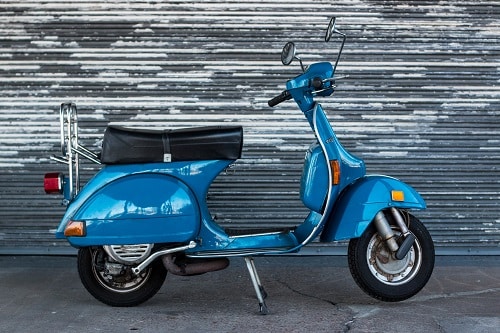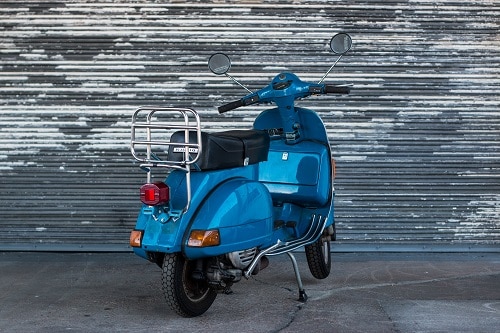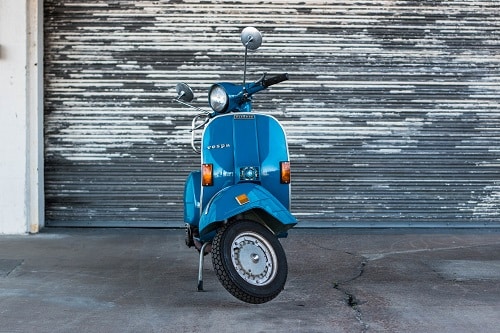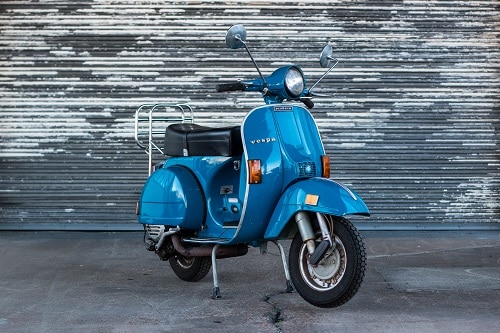
Vespa P200E- 1979
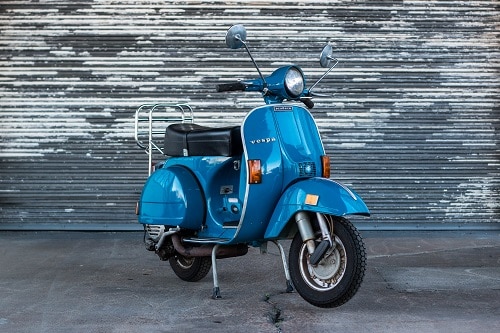
There are certain scenes that spring to mind when thinking of Italy. The Colosseum in Rome, the gondolas on the canals of Venice, and narrow roads filled with Vespa scooters.
Enrico Piaggio was the principal of the Piaggio aircraft company, founded by his father and based in a factory in Pontedera, Tuscany. At the end of WWII, the factory was left completely destroyed, but Piaggio saw a demand for an easy and affordable mode of transportation for the masses and decided to leave the aeronautical field.
Piaggio had seen scooters while visiting the U.S. Brands like Cushman and Salsbury had a full range of scooters in production in the 1940s that were quite popular. To modern eyes, though, the vehicles were pretty primitive-looking, with their small wheels and simple designs.
The MP-5, a prototype scooter based on a small motorcycle made for parachutists, was produced in late 1945. It was nicknamed “Paperino” (the Italian name for Donald Duck) because of its strange shape. However, Enrico Piaggio did not like the final design.
So, Piaggio approached aeronautical engineer Corradino D’Ascanio to design a new bike in April 1946. D’Ascanio rather disliked traditional motorbikes. He felt that motorcycles were too bulky, dirty and unreliable, so he set about making a two-wheeled vehicle that didn’t feel like a motorcycle. D’Ascanio’s MP6 prototype had its engine mounted beside the rear wheel. The wheel was driven directly from the transmission, eliminating the drive chain and the oil and dirt associated with it. The prototype had a spar frame with stress-bearing steel outer panels. These changes allowed the MP6 to have an easy-to-mount step-through design. The MP6 design also included a single-sided front suspension, interchangeable front and rear wheels mounted on stub axles, and a spare wheel.
Upon seeing the MP6 for the first time, Enrico Piaggio exclaimed: “Sembra una vespa!” (“It looks like a wasp!”) Piaggio effectively named his new scooter on the spot. Vespa is Italian for wasp—derived from the vehicle’s body shape: the thicker rear part connected to the front part by a narrow “waist”, and the steering rod resembled antennae.
The Vespa’s popularity took off. By the end of 1949, 35,000 had been produced. Within ten years, over one million Vespas were produced.
The model seen here is a P-series 200 E (the “E” stood for electronic fuel injection). In 1977, Piaggio decided the original Vespa needed a slight redesign. A larger frame, more angular cowl, and a new front suspension were added to the classic Vespa shape. Vespa left the US market from 1981- 2001. Piaggio revived US sales with the more modern ET series. Vespa scooters remain on sale in the US and around the world today.
Specifications:
Manufacturer: Piaggio
Country of Origin: Italy
Engine: Air-cooled, 198cc, single-cylinder, two-stroke, 10 bhp
Transmission: 4-speed manual
Top Speed: 68 mph
Years of Production: 1977-2017 (P series)
Number Produced: 16 million and counting (all Vespa models)

